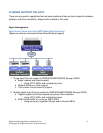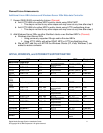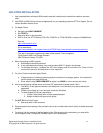
Digital Media Storage Solution Installation Guide 13
© Copyright 2010, IBM Corporation. All rights reserved.
RECOMMENDED RAID CONFIGURATIONS
RAID
level
RAID Array
size
Segment
size
Disk type
Journal
1 or 10
As required
256
FC or SAS recommended
Meta Data
1 or 10
As required
256
FC or SAS recommended
Journal and Meta Data may reside in separate LUN‟s carved from the same RAID Array if
required in small implementations. However, the ideal condition is separate LUN‟s tied to
separate RAID groups for Journal and Meta Data. If possible, these two LUN‟s should be
on a different storage system than the data LUN‟s.
StorNext can stripe across multiple LUN‟s. It is recommended that multiple RAID 1 Groups
be used for Journal and Meta data rather than similarly sized RAID 10‟s. This allows
multiple threads to be talking to disk offering enhanced performance.
Data
5
4+1
256
As required to meet performance
criteria
5
8+1
128
As required to meet performance
criteria
Data – Based upon StorNext file system header block size of 1MB, it is important to keep
this in mind when selecting the segment size. RAID Array (also called Group) size and
appropriate segment size should result in stripe size of 1MB. This will result in optimizing
write throughput speeds. Ex. RAID5 4+1 (4 data) drives x 256K (seg size) = 1 MB Write
stripe & RAID5 8+1x128K (seg size) = 1 MB stripe.
Note – this rule does not apply to all deployments and could be dramatically different for
oil and gas industry deployments among others. It is very important to understand the I/O
block size of the applications sitting atop the StorNext File system.
Data
6
4+2
256
As required to meet performance
criteria
6
8+2
128
As required to meet performance
criteria
• Some customer applications may specify SATA drives and/or require additional RAID
protection. The DS3000/DS4700/DS5000 storage servers offer additional levels of RAID
protection if desired.


















